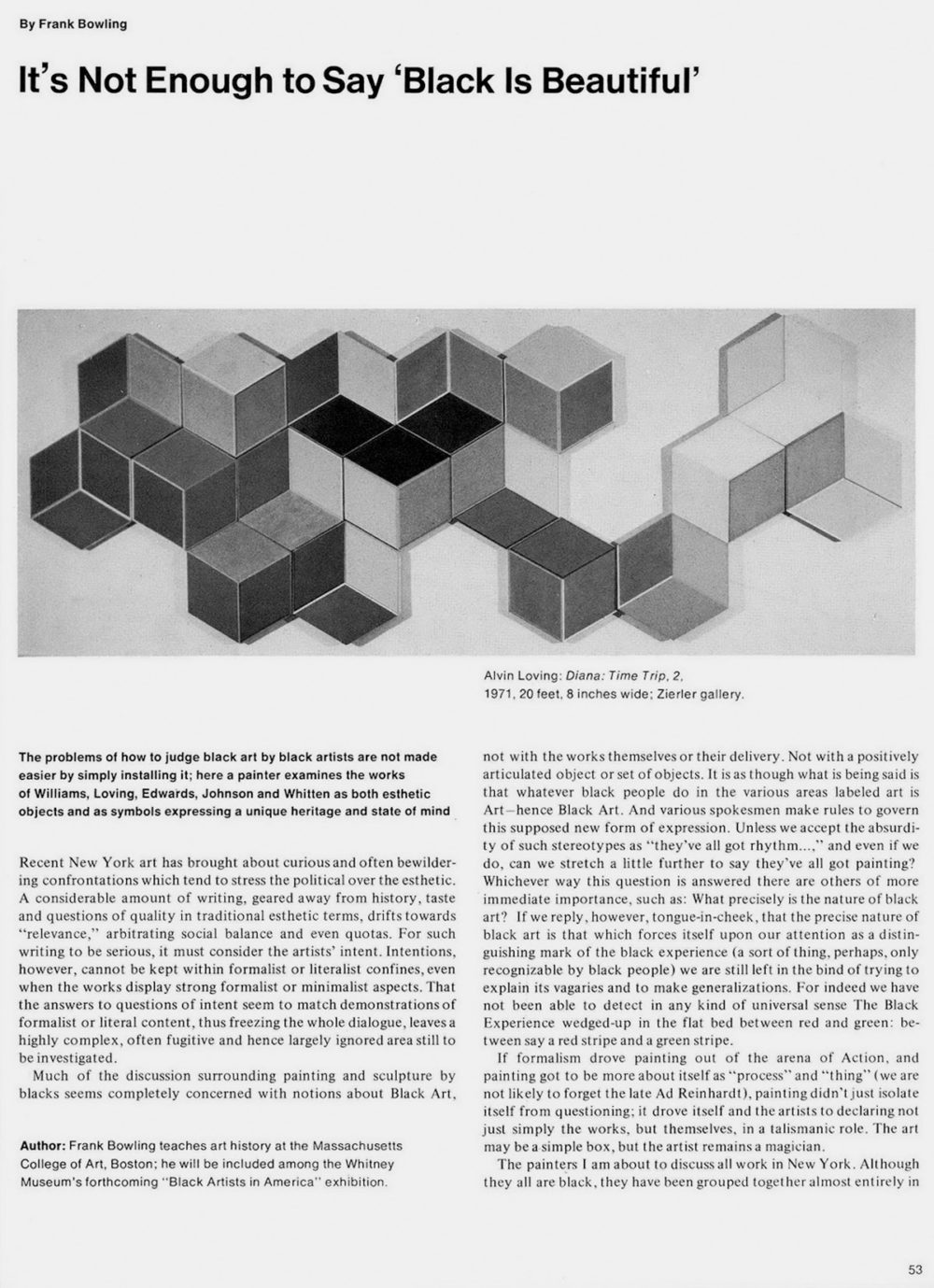
- Source: ArtNews
- Author: Alex Greenberger
- Date: April 23, 2021
- Format: Digital
Artist Eric N. Mack on a 1971 Frank Bowling Essay About Black Art:
‘He’s Arguing for the Importance of Innovation’
For more than 50 years, Frank Bowling, who turned 86 this past February, has been making abstract paintings that not only push the medium in new directions but also fold in nuanced statements about colonialism, racism, and xenophobia. In the ’70s, Bowling was also known as a critic. For the April 1971 issue of ARTnews, he wrote “It’s Not Enough to Say ‘Black Is Beautiful,’” an essay that focused on the double standards to which black artists were regularly subjected. On the essay’s 50th anniversary, ARTnews enlisted Eric N. Mack, an artist in his mid-30s who works with abstraction, to look at the essay anew. “I feel like we should all feel lucky that Frank Bowling is still with us and showing, and not forgotten,” Mack said.

©ARTNEWS, 1971
It is as though what is being said is that whatever black people do in the various areas labeled art is Art—hence Black Art. And various spokesmen make rules to govern this supposed new form of expression.
ENM He’s problematizing the space of Black art. He was able to afford that to his peers. There was a need for that. At that time, art criticism was so highly regarded. There was emotive argument around what it meant to make painting that has been lost on us a bit. He was trying to do things that critics at the time couldn’t do, for this group of artists.
“It is clear that modernism came into being with the contribution provided by European artists’ discovery of and involvement with African works, and their development of an esthetic and a mythic subject from it. But the point I am trying to make concerns the total “inheritance” which constitutes the American experience and that aspect of it with which black people can now (perhaps they always have) fully identify, due to the politicization of blackness.”
ENM With the distance of reading this in 2021, you may not get the system of value at play and the ideological differences. You know, he’s talking about this European understanding versus an American one. Bringing out those differences to give these artists dimension [due]. It’s something that Bowling could do that would inform later critics and writers to look closer at the work of his peers.
“William Williams’ work is like Frank Stella’s in not being about memory. It’s about discovery. There is almost no apparent residue, only amazed recognition as these bright abstractions register their charge to the eye and brain.”
ENM I like the generosity in observing a little closer—almost a critical look at the past, the biography, the previous exhibitions that informed it. What he’s doing is giving the work back to the artists, to politicize the labor of the time, as well as using the terms as they’re set formally. I think that’s important. It’s important to have a Black artist talking about other Black artists. It’s allowing them to possess themselves and hold their own space, especially in a space where people are devouring without taste.
“We have not been able to detect in any kind of universal sense The Black Experience wedged-up in the flat bed between red and green: between say a red stripe and a green stripe.”
ENM It was clear he did a job, that this was a task that was important, to separate himself and the subjectivity of his studio. It gives a measure to his voice. He’s arguing for the importance of innovation—that people were trying to make a new kind of art.

